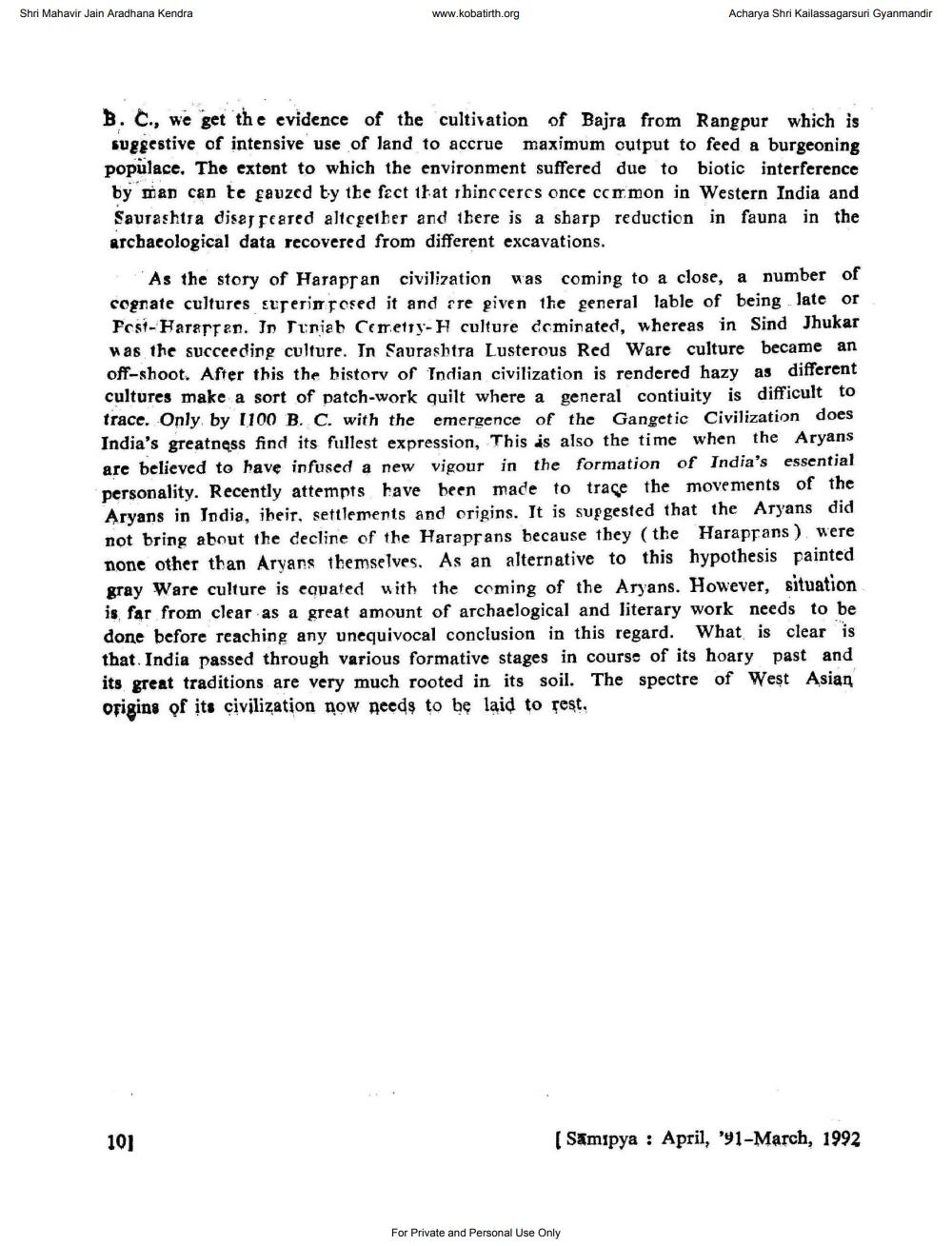________________
Shri Mahavir Jain Aradhana Kendra
www.kobatirth.org
Acharya Shri Kailassagarsuri Gyanmandir
B. C., we get the evidence of the cultivation of Bajra from Rangpur which is suggestive of intensive use of land to accrue maximum cutput to feed a burgeoning populace. The extent to which the environment suffered due to biotic interference by man can te gauzed by the fact that shinccercs once common in Western India and Saurashtra disap scared altogether and there is a sharp reduction in fauna in the archaeological data recovered from different excavations.
As the story of Harapsan civilization was coming to a close, a number of cognate cultures suserimposed it and are given the general lable of being late or Post-Harasran. In Tuniab Cemetry-H culture dominated, whereas in Sind Jhukar was the succeeding culture. In Saurashtra Lusterous Red Ware culture became an off-shoot. After this the history of Indian civilization is rendered hazy as different cultures make a sort of patch-work quilt where a general contiuity is difficult to trace. Only by 1100 B. C. with the emergence of the Gangetic Civilization does India's greatness find its fullest expression, This is also the time when the Aryans are believed to have infused a new vigour in the formation of India's essential personality. Recently attempts have been made to trace the movements of the Aryans in India, iheir, settlements and origins. It is suggested that the Aryans did not bring about the decline of the Harapsans because they (the Harapsans ) were none other than Aryans themselves. As an alternative to this hypothesis painted gray Ware culture is equated with the coming of the Aryans. However, situation is far from clear as a great amount of archaelogical and literary work needs to be done before reaching any unequivocal conclusion in this regard. What is clear is that. India passed through various formative stages in course of its hoary past and its great traditions are very much rooted in its soil. The spectre of West Asian origins of its civilization now needs to bę laid to rest,
( Samipya : April, '91-March, 1992
For Private and Personal Use Only




